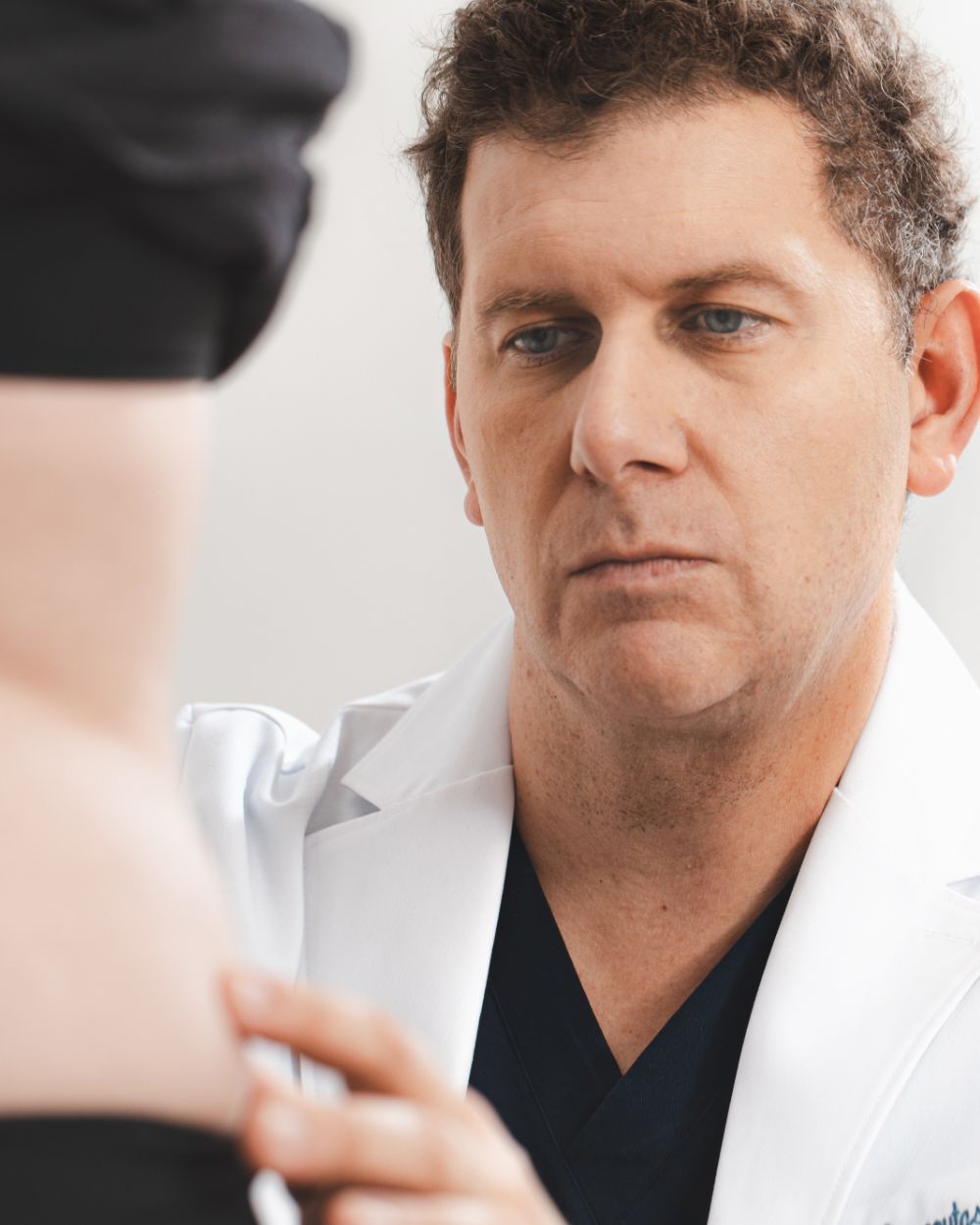Liposuction
Liposuction, also known as “lipoplasty,” is a surgical procedure that removes excess fat from areas of the body that are difficult to target with diet and exercise. This procedure restores a more slender, attractive physique. Though liposuction can be performed by itself, it is often combined with other body contouring surgeries to improve long-term results.
Regardless of where on the body it is being performed, a crucial consideration with liposuction is the degree of skin contraction (shrinkage) that occurs following the procedure. In general, younger patients (under age 40), have greater degrees of skin contraction than older patients. It is for this reason that Dr. Gougoutas may recommend against liposuction in certain areas of the body, or may recommend the procedure in addition to excess skin removal.
Get In Touch
How do I know if I’m a liposuction candidate?
Ideal liposuction candidates are close to their ideal weight and often demonstrate:
- Persistent, pesky areas of fat deposits despite regular exercise and / or weight loss
- Difficulty finding clothes that fit in one particular area
- Self-consciousness when wearing more revealing, warm weather clothing
- Feeling as though one area of the body is “out of proportion” or “too large”
Treatable Areas
Liposuction is a very versatile procedure that can be used to remove stubborn fat from almost any area of the body.
Arms
The accumulation of fat in the upper arms can lead to embarrassing “wings” that hang and wave with every movement, making many feel self-conscious when wearing warm weather clothing. Though not always the case, this is frequently encountered after massive weight loss. Liposuction can remove this excess fat to restore more slender arms with better definition and is often accompanied by a procedure to remove the extra skin (brachioplasty).
Abdomen and Waist
The midsection is one of the most difficult areas to rid of stubborn fat. Liposuction produces a slimmer, more contoured waistline and flatter abdomen by removing this resistant fat. Liposuction of the abdomen and waist is often accompanied by procedures to remove extra skin called an abdominoplasty (tummy tuck).
Back and Flanks
Many people have extra fat on their backs and sides just above their waists. Liposuction can reduce this fat to achieve a smooth back and eliminate stubborn “love handles” or “bra rolls”. Liposuction of the back and flanks is often accompanied by a procedure to remove extra skin (upper back lift).
Hips and Thighs
Excessive fat in the hips and thighs can cause distressing “saddlebags” to develop, often resulting in discomfort and difficulty finding flattering clothes. Liposuction can provide a slimmer appearance and sculpt your hips and thighs to help make your body bikini-ready and boost your confidence. If liposuction is performed on the inner thighs it is often accompanied by a procedure to remove extra skin called a “thighplasty” or thigh lift.
Knees and Ankles
Excess fat accumulation in the lower legs can result in an unsightly contour (“cankles”) causing many to hide their legs even during the warmer summer months. Liposuction can effectively rid these areas of unwanted fat, resulting in a more sculpted appearance of the legs.
Liposuction – What to Expect
Liposuction is performed with a specialized vacuum source hooked up to a thin hollow tube called a cannula. Excess fat deposits are permanently removed through a few, small (2-3mm) incisions. Before fat is removed, however, a salt solution containing medicine to reduce bleeding and discomfort is infused into the fat tissue.
After your liposuction procedure you will be swollen and potentially bruised. After a couple of weeks, most of the swelling and bruising will subside and the contours of your body will start to be noticeably slimmer and more defined. Depending on the region treated, however, you will not see your final contour improvement until all of the swelling resolves which often takes 3-6 months.
Liposuction FAQs
Q. Will liposuction improve the appearance of cellulite?
A. Although liposuction removes excess fat and may provide the skin with a smoother appearance, it is not considered a treatment for cellulite. Depending on the area being treated, pre-existing cellulite may even become more noticeable following liposuction which is why realistic expectations must be addressed at the time of your consultation with Dr. Gougoutas.
Q. Can I gain weight after liposuction?
A. Yes. Though liposuction permanently removes fat cells, the remaining fat cells in the treated area(s) can still increase in size (hypertrophy) with weight gain. Therefore, maintaining a stable weight by following a healthy diet and exercise regimen will best preserve your results.
Q. Is liposuction painful?
A. Even though there are no large incisions to heal following liposuction, expect to be sore in the treated regions for several weeks. This soreness usually peaks at about 48-72 hours after surgery and should resolve, little by little, every day thereafter.
Q. Will I have to wear anything special following my liposuction?
A. Depending on the area that is treated, Dr. Gougoutas may request that you wear a compression garment for several weeks following your procedure. This garment will help reduce swelling, sculpt the underlying tissues and minimize pain.
Q.Does liposuction require a surgical drain?
A. If performed by itself, liposuction rarely requires a drain. If liposuction is performed as part of a larger body contouring procedure drain(s) will likely be required.
